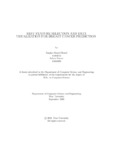| dc.contributor.advisor | Mobin, Md. Iftekharul | |
| dc.contributor.author | Hemel, Tanjim Ahmed | |
| dc.contributor.author | Parvez, Rohan | |
| dc.date.accessioned | 2020-01-20T04:00:42Z | |
| dc.date.available | 2020-01-20T04:00:42Z | |
| dc.date.copyright | 2019 | |
| dc.date.issued | 2019-09 | |
| dc.identifier.other | ID 14301013 | |
| dc.identifier.other | ID 14101199 | |
| dc.identifier.uri | http://hdl.handle.net/10361/13628 | |
| dc.description | This thesis is submitted in partial fulfillment of the requirements for the degree of Bachelor of Science in Computer Science, 2019. | en_US |
| dc.description | Cataloged from PDF version of thesis. | |
| dc.description | Includes bibliographical references (pages 26-27). | |
| dc.description.abstract | Breast cancer (BC) is one of the most common cancers among women worldwide,
representing the majority of new cancer cases and cancer-related deaths according
to global statistics, making it a signifcant public health problem in today's society.
In medical diagnosis, the forecast of an infection goes about as a signifcant center
in breaking down the therapeutic pictures. The undesirable cell development in any
piece of the organ is known as tumor. The tumor might be favorable or harmful.
Threatening tumor is viewed as the most risky tissue. There are diferent specialists
learned about the forecast of bosom malignancy. This paper aims to review on various
data set techniques that are specifcally considered on breast cancer prediction
and also to investigate which feature set is responsible for the disease and rapid
growth of cancer cells as we are selecting the best features. From primarily given
data set we can measure which parameter is responsible for cancer cells and which
features can make the nearest perfect outcomes. It is presently possible to make
precise Computer Aided Diagnosis (CAD)[7] framework so as to make the whole
procedure of distinguishing a dangerous tumor more asset profcient and efcient
through appropriate usage. This paper displays the relative investigation of various
machine learning calculations and their outcomes in anticipating destructive tumors.
For example, Decision Tree, Support Vector Machine, K-Nearest Neighbors, Linear
Discriminant Analysis, Naive Bayes and Logistic Regression with and without PCA
on a dataset with 30 highlights removed from a digitized picture of a Fine Needle
Aspirate (FNA)[19] of a breast mass. Profound learning models like Artifcial Neural
System and Convolutional Neural Network are utilized and their exhibitions are
looked at. | en_US |
| dc.description.statementofresponsibility | Tanjim Ahmed Hemel | |
| dc.description.statementofresponsibility | Rohan Parvez | |
| dc.format.extent | 27 pages | |
| dc.language.iso | en | en_US |
| dc.publisher | Brac University | en_US |
| dc.rights | Brac University theses are protected by copyright. They may be viewed from this source for any purpose, but reproduction or distribution in any format is prohibited without written permission. | |
| dc.subject | Computer aided diagnosis | en_US |
| dc.subject | Convolutional neural network | en_US |
| dc.subject | Support vector machine | en_US |
| dc.subject | Breast cancer detection | en_US |
| dc.subject | Logistic regression | en_US |
| dc.subject | Random forest | en_US |
| dc.subject | K-Nearest neighbours | en_US |
| dc.subject | Naive bayes | en_US |
| dc.subject | PCA | en_US |
| dc.subject | FNA | en_US |
| dc.subject | Artifcial neural network | en_US |
| dc.title | Best feature selection and data visualization for breast cancer prediction | en_US |
| dc.type | Thesis | en_US |
| dc.contributor.department | Department of Computer Science and Engineering, Brac University | |
| dc.description.degree | B. Computer Science | |

